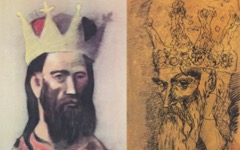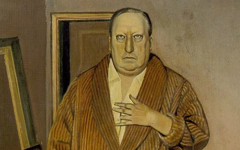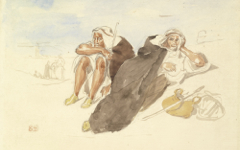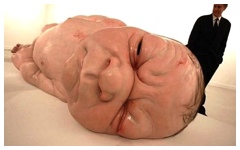Frowns and Thoughts
The frown is not a hot topic in art history and, though little has been written about it, few features convey meaning so efficiently. Elizabeth Sacks wrote that a pursed brow in Othello immediately indicates thoughts shut up in the brain and so it does in art too.{ref1} But who’s thinking? A deep furrowed brow often appears on odd characters, such as Michalengelo’s David (1501-04) or Ron Mueck's A Girl (2006), where it can only represent the artist’s thoughts as expressed through his alter ego and not the thoughts of the protagonist it seems to represent. When frowns appear on animals, such as St. Jerome's lion in an engraving by Albrecht Dürer, you know at once that the animal, as a self-reference, is thinking. The meaning of a frown is so obvious that Charles Darwin thought the corrugator muscle making it was the most remarkable of the human face because it irresistably conveys the idea of mind.{ref2}
Most Recent Articles
All Articles (Alphabetical by Artist, then Title)
In a short addendum to Part 1, see how Balthus conveyed his alter ego
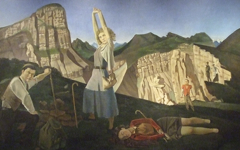
Balthus’ The Mountain (1937) Part 2
See how Caravaggio's iconic painting makes art's basic paradigm crystal clear
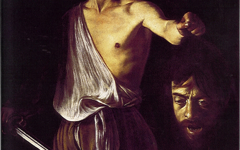
Caravaggio’s David with the Head of Goliath (1610)
Caravaggio executes his painting with a sword just as he executed a man

Caravaggio’s Judith and Holofernes (c.1599)
Find out how inconsistencies in an artist's technique can be the sign of significant meaning
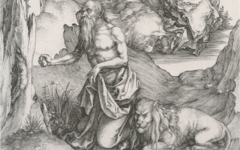
Dürer’s St. Jerome in the Wilderness (1496)
If you think like the artist and think inwards, all changes...
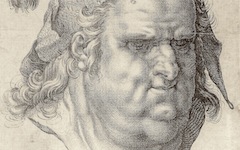
Goltzius’ Man Wearing a Tasseled Cap (1587)
Don't get misled by a charming scene. There's always more to see in the work of a real artist.

Homer’s The Boat Builders (1873)
If an artist's first and last initials are the same, or his initial matches that of his hometown, like Lucas van Leyden's, it is more than likely to appear in his work as well.

Lucas van Leyden’s Standard-Bearer (c.1510)
Durer's 1500 self-portrait as Christ is considered most unusual. He was not alone.

Mantegna’s Ecce Homo (c.1500)
David is not difficult to understand as long as you use the correct perspective
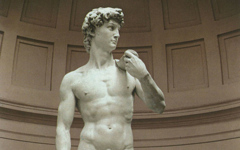
Michelangelo’s David (1501-04)
See how Picasso in "copying" a portrait changes it into an image of his own thought process
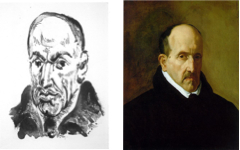
Picasso’s Portrait of Gongora (1947)
See how Picasso writes his own identity over someone else's face

Picasso’s YO’s in Piero Crommelynck (1966-71)
It can be difficult to explain why Rembrandt portrayed himself as a beggar. Here's what I think...

Rembrandt’s Self-portrait as A Beggar Seated on a Bank (1630)
© Simon Abrahams. Articles on this site are the copyright of Simon Abrahams. To use copyrighted material in print or other media for purposes beyond 'fair use', you must obtain permission from the copyright owner. Websites may link to this page without permission (please do) but may not reproduce the material on their own site without crediting Simon Abrahams and EPPH.
